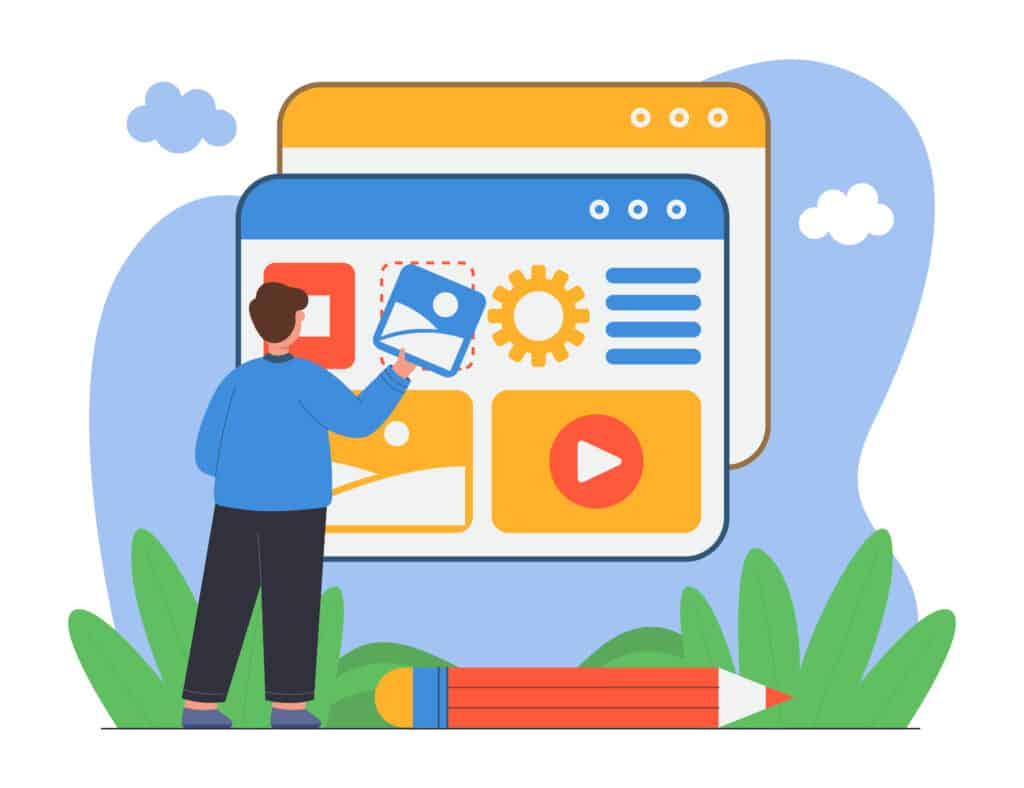
Comprehensive Guide To E-Contrent Development
E-content development refers to the process of creating, gathering, delivering, and managing information or content delivered electronically. This content can range from text, images, audio, video, animations, and more, primarily used for educational, informational, or marketing purposes. It involves the use of digital technology to deliver engaging and interactive content to learners. Here are some key points to understand about e-content development:
Concept of E-Content Development:
- Definition: E-content development involves creating digital educational materials that can be accessed and utilized through various electronic platforms such as computers, tablets, or mobile devices.
- Interactive and Engaging: E-content aims to enhance the learning experience by incorporating multimedia elements like videos, animations, quizzes, and simulations. It encourages active participation and makes learning more interactive and engaging.
- Flexible and Accessible: E-content allows learners to access educational materials anytime and anywhere, providing flexibility in terms of pace and location. It caters to diverse learning styles and individual needs.
Stages of E-Content Design and Development Process:
- Analysis and Planning: This stage involves analyzing the target audience, learning objectives, and instructional requirements. Content developers determine the scope, format, and structure of the e-content based on these factors. Understanding your audience is the first step in e-content development. Knowing who you’re targeting will help you tailor your content to their needs, preferences, and understanding level. Consider factors like age, occupation, educational background, and interests.
- Define Your Goals – What do you want to achieve with your e-content? Are you looking to educate, inform, entertain, or persuade? Defining your goals helps you create content that aligns with your objectives.
- Content Research – Researching is crucial in e-content development. Gather as much information as possible about the topic you’re covering. Use credible sources to ensure the accuracy of your content.
- Content Creation: In this stage, subject matter experts and instructional designers create the actual content. They develop text, graphics, videos, and interactive elements to convey the necessary information and engage learners effectively.
- Content Organization – Structure your content in a way that’s easy to understand and navigate. Break down your content into sections or chapters, use headings and subheadings, bullet points, and numbering where necessary.
- Integration of Multimedia – Integrating multimedia elements can significantly enhance the effectiveness of your e-content. Videos, images, infographics, animations, and audio can make your content more engaging and easier to comprehend.
- Interactive Elements – Adding interactive elements like quizzes, surveys, games, or discussion forums can increase user engagement and make learning more effective.
- Design and Development: The content is organized and structured in a logical sequence. Instructional designers focus on creating an intuitive and user-friendly interface. They optimize the visual layout, navigation, and interaction design of the e-content.
- Accessibility – Ensure your e-content is accessible to all users, including those with disabilities. Use alt text for images, subtitles for videos, and ensure your content is readable for screen readers.
- Review and Revision: The e-content is reviewed by stakeholders, including instructors, subject matter experts, and learners. Feedback is collected, and revisions are made to improve the overall quality and effectiveness of the content.
- Testing and Quality Assurance: The e-content undergoes rigorous testing to identify any technical or usability issues. Quality assurance checks are conducted to ensure that the content functions as intended and meets the desired learning outcomes.
- Deployment and Maintenance: Once the e-content is finalized, it is deployed on the chosen electronic platform or learning management system (LMS). Ongoing maintenance is required to address any updates, technical glitches, or user feedback.
- Publish and Distribute – Choose the right platform to publish your e-content. It could be a website, blog, e-learning platform, social media, etc. After publishing, promote your content to reach your target audience.
- Evaluation and Feedback – Collect feedback from your audience to understand how well your content is performing. Use this feedback to make necessary improvements.
Needs and Importance of E-Content Development:
- Enhanced Learning Experience: E-content development provides an immersive and interactive learning experience, incorporating multimedia elements that cater to various learning styles. It allows learners to explore concepts in a more engaging and personalized manner.
- Flexibility and Accessibility: E-content can be accessed anytime and anywhere, allowing learners to study at their own pace and convenience. This flexibility enables self-paced learning, remote learning, and access for learners with diverse needs.
- Engagement and Motivation: Interactive elements like videos, quizzes, and simulations in e-content make the learning process more enjoyable and motivating. They encourage active participation and improve knowledge retention.
- Scalability and Cost-effectiveness: E-content can be easily replicated and distributed to a large number of learners without significant additional costs. It eliminates the need for physical materials and reduces overhead expenses.
- Timely Updates and Customization: E-content allows for quick updates and customization based on evolving curriculum or learner requirements. Content developers can easily modify or add new information to keep the content current and relevant.
Related reading: How to create excellent content?
Challenges in E-Content Development:
- Content Security: Protecting intellectual property and preventing unauthorized access to content.
- Keeping Pace with Technology: Adapting to rapidly evolving tools and platforms.
- Accessibility: Ensuring content is accessible to all, including those with disabilities.
- Engagement: Maintaining learner engagement in a digital environment.
- Content Personalization: Tailoring content to individual learner needs.
Conclusion
In conclusion, e-content development involves creating digital educational materials that enhance learning through interactivity, flexibility, and accessibility. The process includes stages of analysis, content creation, design, review, testing, deployment, and maintenance. E-content meets the needs of modern learners and provides an engaging and effective learning experience.



0 responses on "What are different stages of E-Content Development?"